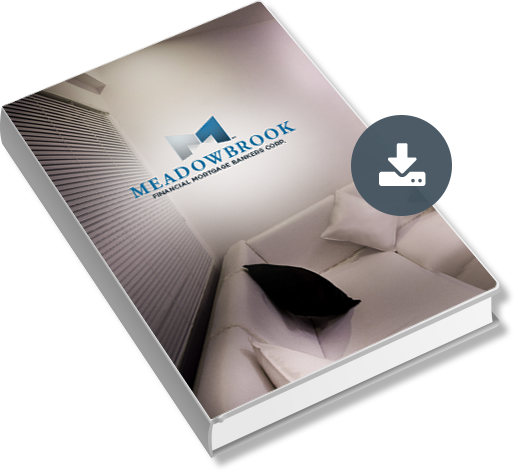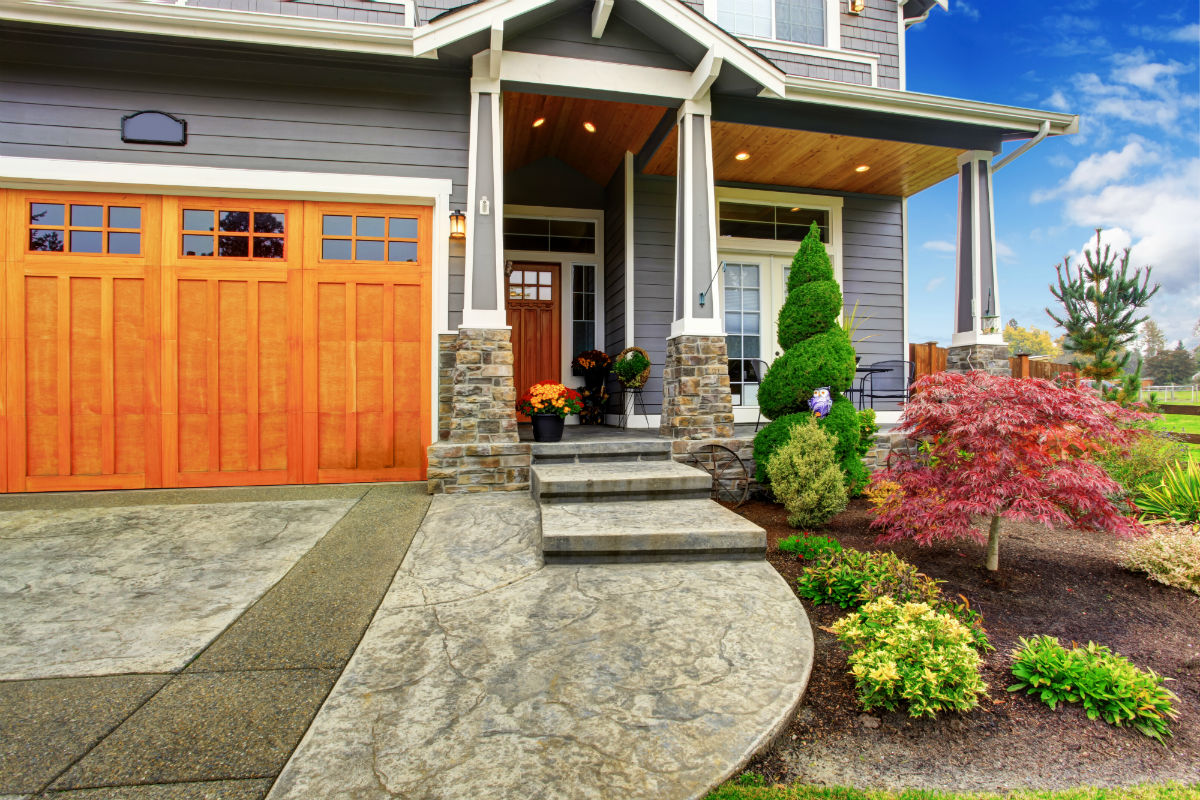Search Blog Posts by Blog Topic
9 Things You Need to Know About Different Types of Interest Rates and Loan Terms
December 15, 2019
Once you decide that you wish to buy a house, you need to determine what type of mortgage might work best for you. For instance, you may benefit by applying for a USDA loan or a VA loan, provided you meet the required eligibility criteria. Two aspects that remain common no matter what type of loan you get include interest rates and loan terms.
Here’s what you need to know.
1. What are fixed-rate loans?
A fixed-rate home loan is one where the interest rate remains the same for the entire course of the loan. It depends on the market rate at the time of your loan’s origination. Changing market interest rates have no impact on the interest you need to pay through a fixed-rate loan. This ensures that your monthly repayments remain the same for the entire loan term.
2. What are adjustable-rate mortgages?
Adjustable-rate mortgages (ARMs) typically come with a fixed interest rate for a specific period of time, after which it may fluctuate according to prevailing market rates. After the fixed-rate period, the interest rate of an ARM may change monthly or annually, depending on the market index. Some lenders also place caps on the maximum interest you’ll need to pay.
With an ARM, part of the interest rate risk is transferred from the lender to the borrower. As a result, ARMs are commonly used in situations where fixed-rate alternatives are prohibitively expensive or difficult to obtain.
While the United States Treasury rate is used as a basis to determine the interest rates of most ARMs in the U.S., around 20% rely on the London Interbank Offered Rate (LIBOR).
3. What are the different types of adjustable-rate mortgages?
Adjustable mortgages for home purchase come in three basic forms:
Conventional Variable Rate Mortgages
Getting a typical ARM requires that you prepare yourself for adjusting rates for as long as you do not repay or refinance the mortgage. The rate usually reflects a third-party index and includes your lender’s margin. Rates adjust based on a predetermined schedule, which can be monthly, every six months, or every year.
Hybrid ARMs
Hybrid ARMs, also referred to as fixed period ARMS, come with a fixed rate for a specific period of time, and this is followed by an adjustable rate. The fixed-rate periods may vary from three (3/1) to five (5/1), to seven (7/1), to even 10 (10/1) years. When the initial fixed-rate period is long, the difference between the interest rate of an ARM and that of a fixed-rate mortgage is small. The converse holds true as well.
The date when the switch takes place is referred to as the reset date. Then, the interest rate is assessed and recalculated every year. Some ARMs, such as 3/3 and 5/5 ARMs, come with more than one interest rate adjustment per year. However, these are not easy to find.
Option ARMs
If you go the option ARM way, you get to choose from four monthly payment alternatives. These include a predetermined minimum payment, a 15-year amortizing payment, a 30-year amortizing payment, or an interest-only payment.
4. Who might benefit by getting an ARM?
Most people who benefit by getting ARMs are people who plan to sell their homes in a few years or people who plan to refinance their mortgages down the line. This is because the longer you plan to draw out an ARM, the riskier it can get. After all, while the interest rate is typically low when you start, it can get noticeably higher once rate adjustments begin. An example in case is the period during the sub-prime crisis. After rates began to adjust, several borrowers found that their monthly payments increased drastically.
5. How do cap limit adjustments work?
Several ARMs come with cap limits on adjustments. This ensures that the interest you need to pay through the course of the loan will not exceed a predetermined rate. For example, if your mortgage comes with a two percent cap, and market rates increase by three percent, the interest rate on your mortgage will increase only by two percent. ARMs can come with caps for the first few years, periodic caps, as well as lifetime caps.
Consider a 3/1 ARM that comes with a cap limit structure of 2-3-7. What this means is that the interest rate can increase by a maximum of 2% after the initial three-year fixed-rate period. In subsequent years, the rate may increase by a further 3% every year. The maximum interest rate hike that loan may attract during the entire loan term, in this case, limits to 7%.
Example: The initial interest rate is 4.1% for the first 3 years; the interest rate in the fourth year can increase to a maximum of 6.1%. In the fifth year, it may increase by up to 3%, getting to no more than 9.1%. Going forward, the interest cannot increase to more than 11.1%, which is 7% more than the loan’s original interest rate.
The cap works in reducing your risk to some degree. However, the difference in monthly payments can be noticeable in some instances. For example, if you take a $200,000 ARM at 4%, and the interest rate increases to 10%, your monthly mortgage payment would increase by around $800. Just how much the rate adjusts depends on the ARM’s index rate.

6. Should you get a fixed-rate or adjustable-rate mortgage?
Various aspects require your attention when determining if a fixed-rate or adjustable-rate mortgage might work better for you.
Interest Rate Prediction
Since the 1990s, variable rates have decreased gradually, although there have been periods of movement in both directions. However, historical trends can’t be taken for granted when it comes to predicting future performance. Besides, predicting the timing, direction, and speed of adjustments is not easy, especially when it comes to getting all three right.
When existing interest rates are low and there is speculation about a hike, opting for a fixed-rate mortgage might be the way to go. This is because the low-interest rate will stay in place even if the market rate climbs to a higher level. However, if interest rates are predicted to fall, you might want to consider taking an adjustable-rate mortgage.
The Certainty Factor
If you are already on a tight budget, you don’t want to worry about unfavorable changes in interest rates denting your ability to make timely repayments. In such a scenario, while a fixed-rate mortgage would come with higher monthly payments initially, it would offer peace of mind down the road, with you knowing that your repayments will not change through the loan term.
Making Prepayments
If you plan to make aggressive prepayments to try and pay your mortgage off ahead of time, you can benefit by getting an ARM. This is because if you manage to pay a significant portion of the loan during the fixed-rate period, interest rate hikes in the later stage might not have too much of a negative effect on an already reduced loan balance.
Time Period
People who plan to repay or refinance their mortgages in short timeframes tend to favor ARMs over fixed-rate alternatives. For instance, a borrower who intends keeping a loan for around six to eight years might be comfortable taking an ARM that is set to adjust in five or seven years.
Amortization Period
Your amortization schedule will give you a clear indication of your periodic loan payments. The schedule provides a visual of how much your payment goes toward interest and your principal amount and paying off the interest. With a long amortization period linked to an ARM, changing interest rates can have a considerable impact on your monthly payments. This is not the case with fixed-rate mortgages, where your payments remain the same throughout.
The bottom line is that getting an adjustable-rate mortgage might work well for you in a decreasing interest rate environment. However, the flip side is that any rise in interest rates will translate into higher monthly payments. Bear in mind that many borrowers could not keep up with their rising payments because of steep interest rate resets during the 2007-2009 Great Recession.

7. What’s an interest-only mortgage?
An interest-only mortgage gives you the option of making considerably low monthly payments for a predetermined time period, where the payments you make only go toward the interest that your loan attracts. Once the introductory period (interest-only period) ends, your payment would increase and a portion of your payment would be applied towards your principal loan amount.
In the long run, interest-only mortgages turn out to be more expensive. However, such mortgages might work well for first-time homebuyers who expect their careers to improving soon as well as for individuals who have limited resources at first.
8. What is a loan’s term?
A loan’s term refers to the time you get to repay the loan in full – to include the principal amount and the interest it attracts. Loan terms are typically easy to identity. For example, a fixed-rate 30-year loan requires that you repay it completely within 30 years.
The term of a loan has a bearing on how much it ends up costing because the interest you pay is affected directly. The relationship is simple – the longer the loan term, the more you pay as interest. So, while a longer loan term might seem tempting because it comes with lower monthly payments, you’ll end up paying more in the form of interest. The reverse holds true as well.
As a result, you’ll end up paying considerably more through a 30-year mortgage when compared to a 15-year mortgage. The question is – how much can you afford to repay each month?
Common Loan Terms
- 30-year mortgages. According to Freddie Mac, around 90% of home loan borrowers in 2016 opted for 30-year mortgages. This is probably because long loan terms reduce the financial burden of homeownership, and it also gives borrowers the ability to buy more expensive homes.
- 20-year mortgages. If you get a 20-year mortgage, not only do you pay your loan off sooner, you end up saving a tidy sum in the form of interest. The interest rate you get will also be slightly lower than that of a 30-year mortgage.
- 15-year mortgages. These mortgages come with the most competitive interest rates. This ensures that your payments are not twice as much as they would be through a 30-year mortgage. In addition, the reduced loan term means you end up paying considerably less in interest dollar value.

9. What is a combination mortgage?
If you cannot make a 20% down payment and want to avoid paying private mortgage insurance (PMI), consider taking a look at how combination mortgages work. Typically, you would take one loan to cover
80% of the home’s value, and another to cover the remaining 20%. In the mortgage industry, this would be referred to as an 80/20 combination loan.
In such a scenario, the first loan for the higher amount usually has a lower fixed rate, whereas the second loan comes with a higher and/or variable rate. Depending on how quickly you expect to repay the second loan, you might be better off getting a combination loan instead of PMI. However, you must do your math in advance.
Conclusion
The interest rate attached to your mortgage and the loan’s term can have a telling effect on how much you end up paying overtime. A variable rate mortgage spread across a long loan term might not be the best way to go, because hikes in interest rates may affect your ability to repay the loan. Fixed-rate mortgages, on the other hand, are the safer approach to homeownership. To determine what loan term might work well for you; take your existing and predicted financial situation into account while talking to your loan officer.
Disclaimers:
30-Year Fixed-Rate Mortgage: The payment on a $200,000 30-year Fixed-Rate Loan at 3.875% and 80% loan-to-value (LTV) is $940.47 with 0 % points due at closing. The Annual Percentage Rate (APR) is 4.026%. Payment does not include taxes and insurance premiums. The actual payment amount will be greater. Some state and county maximum loan amount restrictions may apply.
Adjustable-Rate Mortgage: The initial payment on a 30-year $200,000 5-year Adjustable-Rate Loan at 3.875% and 80% loan-to-value (LTV) is $940.47 with 0 points due at closing. The Annual Percentage Rate (APR) is 4.187%. After the initial 5 years, the principal and interest payment is $965.40. The fully indexed rate of 4.17% is in effect for the remaining 25 years and can change once every year for the remaining life of the loan. Payment does not include taxes and insurance premiums. The actual payment amount will be greater. Rate is variable and subject to change after 5 years.
Ready To Get Started?
Fill out the form below and a mortgage professional will get back to you shortly.

First Time Homebuyer’s Guide
Considering homeownership but not sure where to begin? The Meadowbrook Financial Mortgage Bankers Corp. guide to home buying will make the process easy all in one packet.
Recent Articles

Are You Better Off As a Renter or…
25 July, 2024It is common for people who have started families or have reached a certain age to feel the pressure of buying a home. While expectations…

Mortgages for Seniors – Enjoying Your Golden Years
6 July, 2024There are various reasons seniors choose to get mortgages, from upsizing or downsizing to tapping into the equity they’ve built in their homes. While getting…

What is Better, a Fixed- or Adjustable-Rate Mortgage?
12 June, 2024Becoming a homeowner is an incredible milestone that should be celebrated! Once you have decided that you are ready for this next step, it is…


